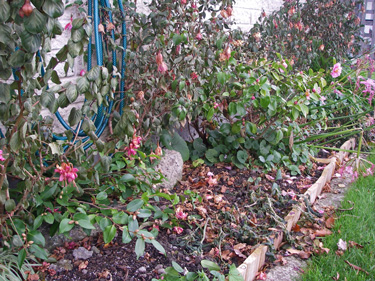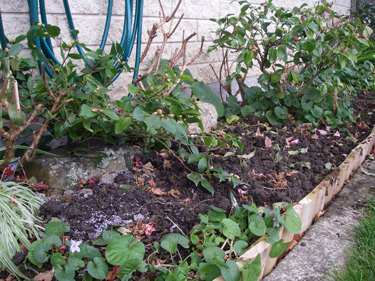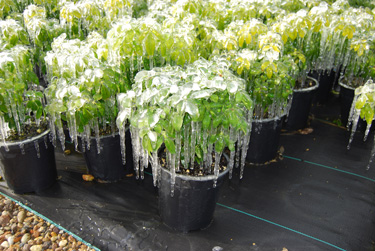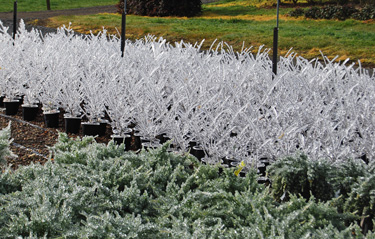Winter's touch
A southerly weather system, fresh snow on the hills, an incoming high, and a cessation in wind flow, are all the perfect ingredients for frost.
In the old days when I worked in a garden centre, a still evening with a predicted overnight low of 4 degrees C or below, meant a quick dash around the garden centre at closing time with the frost covers. The next morning, the fingers would freeze as the stiff fabric was lifted and the ice shaken off. And if you got it wrong, you’d spend the morning tossing out pots and punnets full of compostable plant material.
So how does frost occur? We typically experience radiation frosts, when clear skies and calm winds allow heat to rise from the Earth to the upper layers of the atmosphere. Lack of wind prevents mixing of the air and an inversion layer develops where cold air collects near the ground while warmer air sits above this trapped cold layer.
The topography of the land affects frost prevalence. Frost pockets will form in valleys where cool air is trapped and on hilltops at higher altitudes. On any given property, there may be different temperatures on opposite sides of the house, under protective trees, on south or north facing slopes, or in low-lying spots.
It is remarkable how some plants happily shrug their shoulders at frost while others are reduced to mush. Frost injures plants by causing ice crystals to form in plant cells, damaging the cell walls. Frost-damaged leaves appear water-soaked, shrivel and turn dark brown or black. But it is not readily apparent which plants will succumb – for most gardeners it becomes a matter of trial and error and lessons learnt over time.
A couple of severe frosts in May rendered a colourful border garden to a brown mess. Impatiens practically withered from sight – not surprising with their fleshy watery stems, but this time the fuchsias were particularly hard hit. The general rule of thumb is to leave frosted plants alone so at least the damaged parts can protect the rest of the plant. However, the fuchsias were so ugly, they could not be tolerated and I was compelled to give them their annual prune.
Surprisingly, nerines in the same border, with their fleshy lush leaves were completely unaffected. Many plants which look to be frosted will recover as soon as the sun melts the frost away. Plants can be acclimatised to the cold by gradual exposure to outside and overnight temperatures, and many plants may be frost tender when young but will be quite tolerant when mature. Meyer lemon trees are a good example.
There are plenty of things you can do to minimise frost damage:
- Keep an eye on the weather forecast and if the overnight low is predicted to be 4 degrees Celcius or below with little wind, prepare to cover.
- Cover plants with frost cloth, newspaper or any light material that will drape over, although woven fabrics are better insulators than plastics or paper. The covers can be laid right over the crop, or can be supported on stakes. Use pegs if there is the chance of a slight breeze.
- Plants under evergreen trees are protected from frost so this might be an option for growing tender plants.
- Water before the frost – a moist soil can hold four times more heat than a dry soil. It will also conduct heat to the soil surface faster than a dry soil, aiding in frost prevention.
- Follow the advice of Monty Don, and keep frost sensitive plants in pots which can be moved into sheltered places during winter.
Whatever you do, most perennial plants will recover in the spring from frost damage, and frost is an effective way of reducing the populations of over-wintering pests.
And frost can produce some wondrous scenes and icy patterns that can only be delighted in. The photos (right) are in a plant nursery where sprinklers are used to keep the plants “warm” on a frosty night, the science being that as water freezes, it releases heat - quite beautiful. (Thanks to Grant at Growing Spectrum)2-Jun-2015

The frosted garden before

After - a good prune back and tidy


Plants protected by frozen water in a plant nursery


